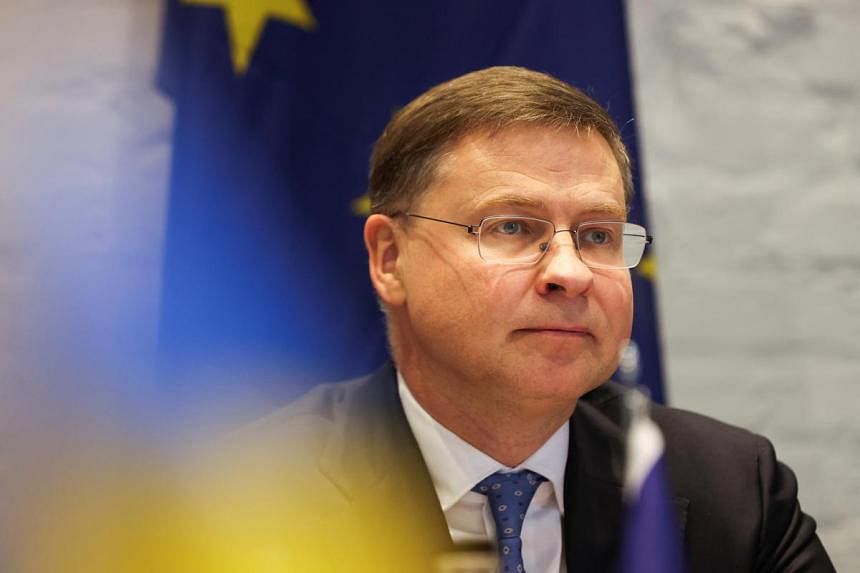WASHINGTON – Group of Seven (G-7) members are discussing using nearly US$300 billion (S$409 billion) in frozen Russian assets as collateral to provide loans to Ukraine, European Commission executive vice-president Valdis Dombrovskis said on April 18.
Mr Dombrovskis said different options were under consideration and the discussions were ongoing.
He said he hoped the European Union – where the lion’s share of the frozen assets are held – would approve a separate EU measure in coming months to use the profits or interest earned on the assets to help Ukraine.
A decision was due in the first half of the year, he added.
G-7 finance officials on April 17 said they were strongly committed to help Ukraine meet urgent short-term financing needs as it struggles against Russia’s invasion, including harnessing the interest earned on frozen Russian assets.
The statement did not include a specific plan for the assets, but said they would “continue working on all possible avenues by which immobilised Russian sovereign assets could be made use of to support Ukraine” with a view to presenting options to G-7 leaders at a June summit in Italy.
Mr Dombrovskis declined to say which option was favoured, but said it would likely involve collateralising the Russian assets instead of seizing them outright.
Deputy US Treasury Secretary Wally Adeyemo on April 17 said the G-7 discussions on frozen Russian sovereign assets were a “work in progress”.
“We’re talking through a number of different options. One of them is seizure, but another is collateralising, or even using the windfall profits or the interest from these assets to fund a loan,” Mr Adeyemo told an event hosted by Semafor.
French Finance Minister Bruno Le Maire said on April 17 that the G-7 needed to be in a position to harness interest of some €3 billion (S$4.35 billion) to €5 billion per year earned on the assets.
A source familiar with the discussions said there was still more work to do before the June summit of G-7 leaders, where they expected to review the various options. REUTERS

